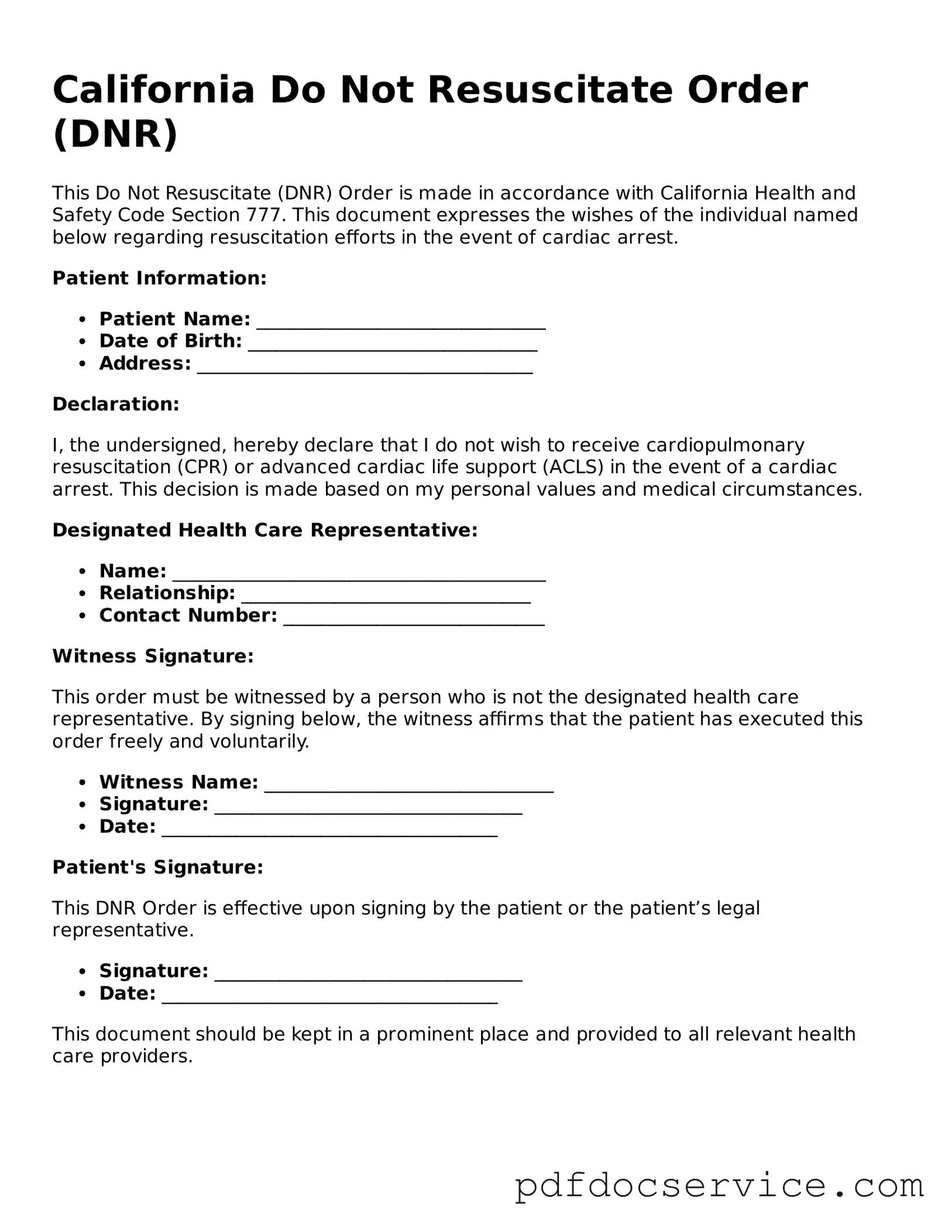A California Do Not Resuscitate Order (DNR) form is a legal document that allows a person to express their wishes regarding resuscitation in the event of a medical emergency. Specifically, it instructs healthcare providers not to perform cardiopulmonary resuscitation (CPR) if the individual’s heart stops beating or they stop breathing. This form is particularly important for individuals with terminal illnesses or severe health conditions who wish to avoid invasive medical interventions.
In California, any adult who is capable of making their own medical decisions can complete a DNR form. This includes individuals who are 18 years or older and are of sound mind. Additionally, a legal representative, such as a healthcare proxy or power of attorney, can complete the form on behalf of someone who is unable to do so due to incapacity.
Obtaining a DNR form in California is relatively straightforward. You can acquire the form from various sources, including:
-
Your healthcare provider or physician’s office.
-
Hospitals and medical facilities.
-
Online through the California Department of Public Health's website.
Once you have the form, it is essential to fill it out completely and accurately to ensure that your wishes are clearly communicated.
When completing the DNR form, you should include the following information:
-
Your full name and date of birth.
-
Your signature and the date of signing.
-
The signature of a witness or your healthcare provider, if required.
-
Any specific instructions or preferences regarding your care.
Make sure to review the form carefully to ensure that all necessary sections are filled out and that your intentions are clearly stated.
Yes, a properly completed DNR form is legally binding in California. Healthcare providers are required to honor the wishes expressed in the form, provided it is signed and dated by the individual or their authorized representative. It is important to keep copies of the DNR form accessible, as medical personnel will need to see it in the event of an emergency.
Can I change or revoke my DNR order?
Yes, you have the right to change or revoke your DNR order at any time. To do so, you should destroy the original form and create a new one that reflects your current wishes. It is advisable to inform your healthcare provider and any family members about the changes to ensure that everyone is aware of your updated preferences. Keeping copies of the new form in easily accessible locations is also recommended.
